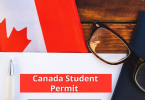By Eileen Bailey
When a student with dyslexia is eligible for accommodations in the classroom through an IEP or Section 504, those accommodations need to be individualized to fit the unique needs of the student. Accommodations are discussed at the annual IEP meeting, during which the educational team determines the accommodations that will help support student success.
Accommodations for Students With Dyslexia
Although students with dyslexia will have different needs, there are some accommodations which are commonly found to be helpful for students with dyslexia.
Reading Accommodations
Provide books on tape, CDs, or on an electronic reader or textbook that a child can listen to especially for content areas.
Create opportunities for oral reading on a one-on-one basis and only ask the student to read aloud in class if he feels comfortable doing so and volunteers to read
Provide outlines, summaries of chapters, vocabulary words and preview questions before reading
Allow students to use a highlighter to mark important parts of the text
Used shared reading or reading buddies
Allow the student to discuss, one-on-one, material after reading with a classroom aide, a partner student or the teacher
Provide a set of books/textbooks for student to keep at home
Reduce spelling tests
Give spelling tests orally
Don’t take off points for spelling errors on written work
Reduce spelling words
Writing Accommodations
Allow student to dictate work to a parent or aide
Provide speech-to-text software
Offer alternative projects instead of written reports
Photocopy another child’s notes or designate a note-taker who will share notes at the end of class
Minimize the amount of copying from the board
Allow student to use a keyboard to take notes
Let student respond to questions orally rather than writing each answer
Reduce written work
Testing Accommodations
Allow student to take tests orally
Allow for extra time
Review directions to test orally
Provide alternatives to testing, such as projects, oral or video presentations
Read test questions to student and write down answers as the student speaks the answer
Allow tests to be taken outside of the classroom, in a quiet area with minimal distractions
Have students state answers into a tape recorder.
Homework Accommodations
Reduce homework, especially assignments requiring reading
Allow student to dictate answers to homework to a parent, sibling or tutor
Allow typewritten homework.
Use worksheets with minimal writing
Limit time spent on homework
Do not take off points for homework handed in late
Giving Instructions or Directions
Break large tasks into steps
Give directions in small steps
Read written directions or instructions to the student
Provide alternatives to writing assignments, use an online calendar, provide student with a written list of assignments each morning, have a buddy student write assignments, email list of assignments to student or parent
Give examples or model behavior when giving instructionsy
Make eye-contact with student when giving directions
Technology Accommodations
Provide computers that have speech recognition software
Allow the use of electronic spell-checkers
Provide software that enlarges images on a computer screen
Provide student with a computer to complete class work
Allow students to tape record lessons
Classroom Accommodations
Often students with dyslexia also have “co-morbid” challenges, especially ADHD or ADD which will add to theAndrew often leave them with negative self-concept and low self-confidence. Be sure to have some of these accommodations, either formally (in the IEP) or informally, as part of your classroom routines, to support both student success and student self-esteem.
Write schedules on board
Write classroom rules on board
Write homework assignments on the board in the morning and leave up throughout the day
Have student sit near the teacher
Use color-coding to organize desk, classroom and student’s books
Use multi-sensory activities to further understanding of topics
Use a positive reinforcement program with rewards and consequences
Create private signals for a student to indicate high frustration or for teacher to bring a child back on track
Increase communication with parents, using daily or weekly emails or phone calls and increase meetings with parents
Assign classroom jobs that will help to increase self-esteem
Work with student to create achievable goals
This list is not comprehensive since just as each student with dyslexia is different, their needs will be different. Some students may only require minimal accommodations while others may require more intense interventions and assistance. Use this list as a guideline to help you think about what needs the student, or students, in your classroom have. When attending IEP or Section 504 meetings, you can use this list as a checklist; sharing with the educational team what you feel would best help the student.
References:
Accommodations in the Classroom, 2011, Staff Writer, University of Michigan: Institute for Human Adjustment
Dyslexia, Date Unknown, Staff Writer, Region 10 Education Service Center
Learning Disabilities, 2004, Staff Writer, University of Washington, The Faculty Room
College students moving around man at desk in classroom
Article
Homework Strategies for Student with Dyslexia








